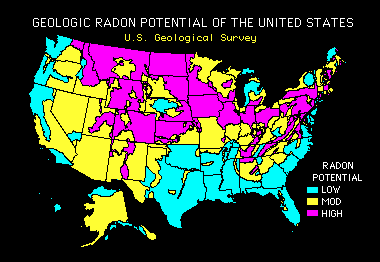What is radon gas? Is it harmful?
Is radon really bad for you?
Breathing radon over time increases your risk of lung cancer. Radon is the second leading cause of lung cancer in the United States. Nationally, the EPA estimates that about 21,000 people die each year from radon-related lung cancer. Only smoking causes more lung cancer deaths.
Interior radon can be reduced by sealing basement structures, water drain, or by sub-slab, or sub-membrane depressurization. In many cases, mitigators can utilize PVC piping and specialized radon suction fans to wear down sub-slab, or sub-membrane radon as well as various other dirt gases to the outside environment. The majority of these options for radon reduction require maintenance, and it is necessary to constantly change any kind of followers or filters as required to proceed appropriate performance. A radon degree of 4.0 pCi/L is still a health and wellness danger, which is why it is essential to have professional radon reduction. Professional mitigation can typically minimize radon degrees to 0.4 pCi/L.
Chronic exposure to radon gas increases the danger of creating lung cancer cells. In the USA, an approximated 21,000 individuals die from radon-related lung cancer yearly (compared with 160,000 lung cancer fatalities from smoking), according to the EPA. Radon is the 2nd leading reason for lung cancer cells, as well as it's the leading reason for lung cancer cells in nonsmokers, according to the company.
Is radon mitigation really necessary?
When radon gas enters the body, it exposes the lungs to small amounts of radiation. In small quantities, experts say this is harmless. However, in persistent exposures or larger quantities, radon can damage the cells of the lining of the lungs, increasing a person's chance of developing lung cancer.
This does not imply that a degree listed below 4.0 pCi/L is taken into consideration acceptable, as mentioned in the BEIR VI research study. It is estimated that a reduction of radon degrees to listed below 2 pCi/L across the country https://writeablog.net/cyrinawjtz/typically-talking-it-only-takes-one-to-three-days-to-eliminate-the-radon-from would likely minimize the yearly lung cancer deaths attributed to radon by 50%. Nevertheless, despite an activity degree of 2.0 pCi/L, the cancer cells danger provided by radon gas is still hundreds of times above the threats enabled health hazards in our food and also water.
- Radon gas is a naturally-occurring by-product of the contaminated decay of Uranium in the soil.
- Relying on your geographical area, the radon levels of the air you breathe outside of your residence may be as high as 0.75 pCi/L.
- The United States EPA has actually put Browse this site it plainly, specifying, "Any type of radon direct exposure has some risk of creating lung cancer.
How do you eliminate radon?
Possible symptoms include shortness of breath (difficulty breathing), a new or worsening cough, pain or tightness in the chest, hoarseness, or trouble swallowing. If you smoke and you know you've been exposed to high levels of radon, it's very important to quit smoking.
If a passenger's lasting direct exposure will certainly balance 4 picocuries per litre (pCi/L) that is 148 Bq/m3, the United States Environmental Defense Agency (EPA) recommends houses be fixed. The USA Doctor General and the EPA both suggest that all whole home dehumidifiers homes be tested for radon. Several states have energetic radon screening and reduction programs in position, which call for testing in structures such as public institutions. Nevertheless, these are not standard across the country, and the rules and laws on minimizing high radon degrees are also less common.
What are the symptoms of radon in your home?

If a person has been exposed to radon, 75 percent of the radon progeny in lungs will become "harmless" lead particles after 44 years. When an alpha particle damages a cell to make it cancerous, the onset of lung cancer takes a minimum of 5 years but most often 15 to 25 years, and even longer.
The carcinogen from radon does not come mainly from radon itself, but rather from the contaminated items formed in the degeneration of radon. The basic effects of radon to the human body are triggered by its radioactivity as well as consequent risk of radiation-induced cancer. Lung cancer is the only observed consequence of high focus radon exposures; both animal and also human studies indicate that the lung and also breathing system are the key targets of radon daughter-induced toxicity. Ultimately, they located that the possibility of establishing lung cancer dropped below one (the no result degree) at radon exposure within the series of 0-4 picoCuries per litre, according to Scientific research Daily.
How long does it take for radon to cause cancer?
Fact: You will reduce your risk of lung cancer when you reduce radon levels, even if you've lived with an elevated radon level for a long time. Keep in mind that radon levels below 4 pCi/L still pose some risk and that radon levels can be reduced to 2 pCi/L or below in most homes.